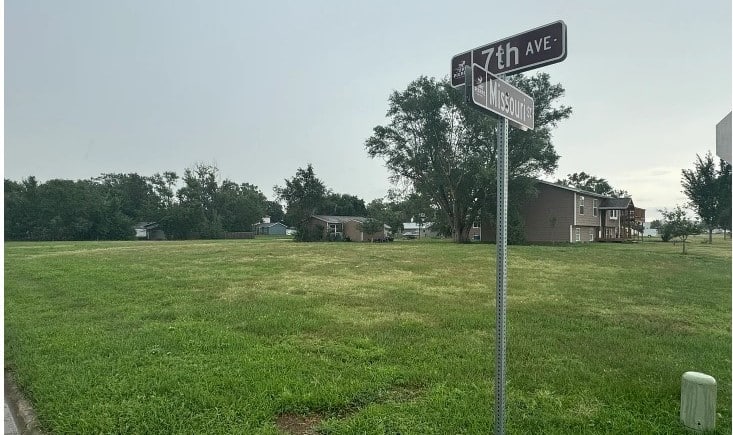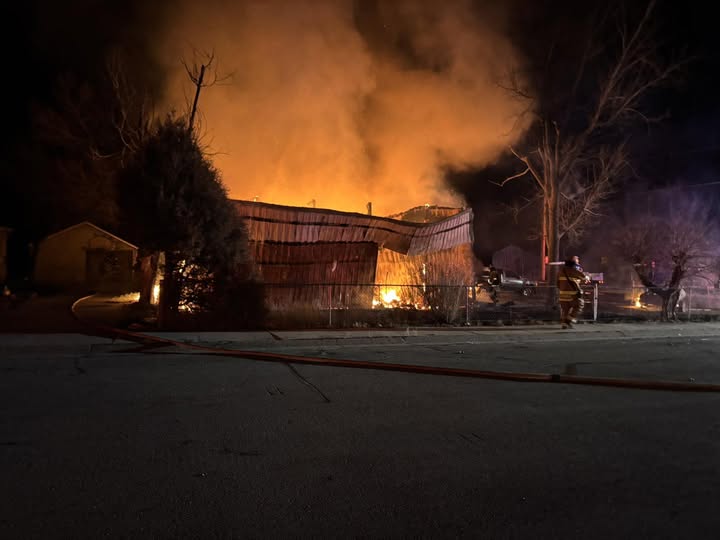From small communities to large, the need to increase the number of living options available to working class families has become a focal point across all levels of government, particularly as the population of the Rushmore State continues to tick upward.
No one gets that better than Mike Weisgram, a second-term lawmaker from Fort Pierre who helped usher through hotly contested legislative efforts to aid housing construction.
Prior to his current stint in the Legislature, Weisgram served as a City Council member in his community from 2015 to 2020.
“I was a city councilman, and we talked about housing being a challenge,” Weisgram said. “When I got asked to run for the Legislature it became one of the things I ran on.”
While other towns in the state embark on their own journey toward less burdensome building, Weisgram and his local counterparts are forced to watch 49 lots in Stanley County remain untouchable for residential purposes, tied up in federal government control.
Since the early 2000s, the Army Corps of Engineers has owned those lots, all of which are in close proximity to the Missouri River, purchased in the name of flood control.
Constituents in the Pierre-Fort Pierre area before the turn of the millennium had been figuratively flooding government phone lines with frustrations about their waterlogged basements, a product of diluted soil near the river allowing water to seep in.
An idea was born out of the quagmire — have the Army Corps of Engineers buy homeowners out. Already with a heavy presence in the area because of the Oahe Dam just upstream, the Corps has long owned much of the lands in the area that border the Missouri.
That undertaking required an act of Congress. Thankfully for advocates of buyouts, they had savvy political operator Sen. Tom Daschle in their corner. In coordination with the Corps, Daschle, the Democratic Senate leader, breathed life into the idea, eventually getting approval from his legislative colleagues in Washington. Interested homeowners were bought out, and their homes were picked up and moved to a different location if they so chose.
Fort Pierre city officials valued the purchase at about $5.45 million shortly after the ink was dry on the sale.
“I was in the carpet business at the time, it was a wonderful time for us through and through,” Weisgram joked, referring to the time period from flooded basements to rehoming as a “mini housing boom” for the area.
Over 20 years and a career later, Weisgram and Fort Pierre Mayor Gloria Hanson want another mini housing boom — and they want the 49 lots back to start it. They’re leaning on their fellow Fort Pierre resident, Sen. Mike Rounds, for help.
“About 18 months ago we had a cup of coffee about trying to get this through,” Weisgram said. “He was all in.”
Rounds dispatched Frank Tedeschi, a veteran former employee of the Corps now working for the senator, to begin the negotiations. Hanson met with Tedeschi at the senator’s D.C. office in February, and in April the three separate parties met remotely to advance the idea.
Key to potentially moving the negotiations forward is a feasibility study that the Corps has to conduct in order to initiate the sale, which would outline the impact on the environment and area. That could take several years to complete, which is why Rounds’ office is advocating for using the feasibility study that was used to get the sale done back in the late 1990s.
Fort Pierre is focused on the widespread benefits that would be felt if the lots were to be developed. For one, it would restore patchwork neighborhoods — where whole blocks of houses appear missing from those around them. More families would move in, shoring up attendance at the local K-12 school and adding to the strapped workforce. And those who owned the lots would be paying property taxes — the Corps is exempt from doing so.
Though the city of Pierre also saw a handful of residential lots sold away to the Corps at the same time, officials there opted not to pursue repurchasing them with Fort Pierre when afforded the opportunity.
“It is going to take another act of Congress to get this done,” Hanson said. “But these could eventually be well-placed, affordable lots.”
Stipulations that could come with the buyback would be aimed at preventing future flooding concerns. That could include building houses on slabs, putting in fill dirt, or preventing the construction of basements.
“We will follow their stipulations,” Hanson continued. “They just have to work with us on being able to accommodate a request.”
The Army Corps of Engineers did not respond to a request for information from The Dakota Scout in time for print publication, specifically about what it would take to get a deal across the finish line, and if it had a timeframe in mind. The federal government is rarely accused of moving quickly.
The lots in question are already equipped with utilities that would be necessary to build housing, such as water and electricity. And Fort Pierre has put to good use a few of them. On one, the city is building an all-season fish cleaning station, while another serves as a community garden. The city can lease the lots to build, but not for residential purposes.
“What would this mean for our community? It would be a real shot in the arm,” Weisgram added. “All the infrastructure is already there… We see the value this could add.”
In a statement, Rounds says that he is looking forward to working with both parties to “implement the recommendations to build back a stronger Fort Pierre.”
“Although planned and implemented with the best of intentions, these buyouts left a patchwork of occupied and unoccupied residential properties that continue to undermine the bonds of community and threaten the prosperity of Fort Pierre. I’ve asked the Corps of Engineers to examine how we can rebuild the community, to help revitalize Fort Pierre and increase its flood resilience.”












